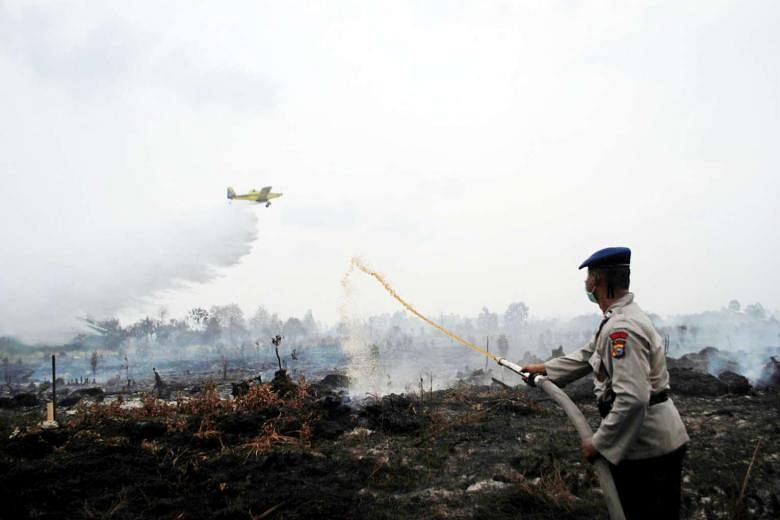WASHINGTON • The really scary thing about climate change is not simply that humans may fail to get their emissions under control. It is that, at some point, the Earth could take over and start adding even more emissions on its own.
A new study underscores this risk by looking closely at Indonesia, which has a unique quality - some 70 billion tonnes of carbon that have built up in peatlands over millennia. In this, Indonesia is much like the Arctic, where even larger quantities of ancient carbon are stored in permafrost, and is also vulnerable.
In each case, if that carbon gets out of the land and into the atmosphere, then global warming will get worse. But global warming could itself raise the odds of such massive carbon release. That is a dangerous position to be in as the world continues to warm.
In the new study in Geophysical Research Letters, a team of researchers, led by Dr Yi Yin of the French Laboratoire des Sciences du Climat et de l'Environnement, looked at the potential of peat bogs in equatorial Asia - a region that includes Malaysia, Papua New Guinea and several other smaller countries but is dominated by Indonesia and some of its largest islands, Kalimantan and Sumatra - to worsen climate problems.
It is timely, considering that last year, amid El Nino-induced drought conditions, Indonesian blazes emitted over 1.5 billion tonnes of carbon dioxide equivalents into the atmosphere. That is more than the annual emissions of Japan (or of Indonesia's fossil fuel burning).
And the research found that over the course of this century, that could keep happening. "The strong non-linear relationship found between fire emissions and cumulative water deficit suggests a high future risk of peat carbon loss due to fire, given that future climate projections indicate a twofold increase in the frequency of extreme El Nino," the researchers wrote.
The situation arises because of the unique qualities of peat: In peat bogs, wetlands accumulate large amounts of organic matter - dead plant life - over many years. If those bogs are then drained, and fires are allowed to burn on them and deep into them, then it is possible to light up huge stores of ancient carbon and to put it back in the atmosphere much more rapidly than the speed at which it accumulated originally.
The study found a tight relationship between El Nino events and large peat fire emissions over the past 19 years. And it projected that under a high global emissions scenario, a warming climate will trigger more intense El Ninos that, in turn, will correspond to more intense blazes. And under more moderate warming, there could still be major peat fire emissions during the century.
"Most climate models predict a little bit stronger, not more El Ninos, but more intense El Ninos," said Professor Guido van der Werf, a fire emissions researcher from VU University in Amsterdam and one of the study's co-authors.
And so much carbon could be lost in this way that it could affect the global atmosphere in what the paper called a "significant positive feedback to global warming". More specifically, the study forecast that as much as 25 billion tonnes of carbon could be released in a high warming scenario - and 13 billion tonnes in a more modest warming scenario, which would require significantly changing the globe's emissions trajectory and shifting it downwards, while still likely missing the goal of limiting warming to just 2 deg C above pre-industrial levels.
If these numbers are converted to carbon dioxide, that would correspond to between more than 47 billion tonnes in the more moderate warming scenario and about 91 billion tonnes of carbon dioxide for the high emissions scenario.
The carbon maths is clear: The world simply cannot have such an additional source of emissions. For instance, the so-called "carbon budget" for holding warming below 2 deg C above pre-industrial levels was about 1,000 billion tonnes of carbon dioxide, as of 2011. And that is for human burning of fossil fuels - not for releases from peat fires.
And finally, something could occur to cut down on the human role in the fires - draining peat bogs and using fire to clear land. Last year showed these land-use practices, combined with drought in an El Nino year, can cause catastrophic fires. "If somehow Indonesia is able to lower the amount of fire, the emissions will go down, of course," Prof van der Werf said.
WASHINGTON POST

